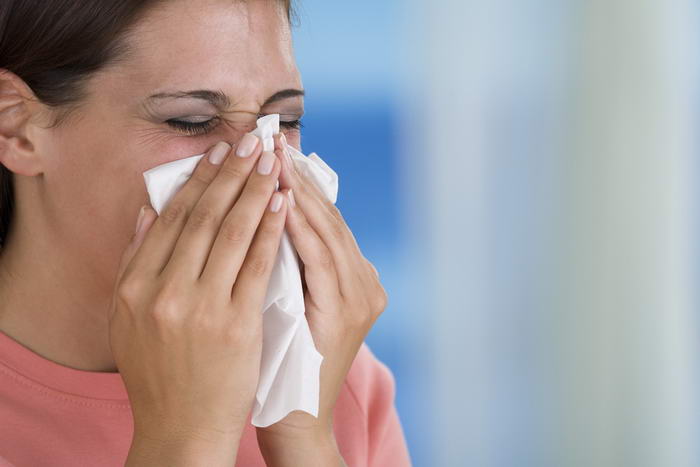In a world brimming with countless forms of environmental interactions, it’s no surprise that we come across some truly unique examples of different allergies. From the usual suspects of pollen and dust mites to the lesser-known adversaries like water, yes water, the array of triggers that our bodies might respond to is indeed mind-boggling.
Take a moment to step back, and imagine a life where everyday, commonplace items could set off an allergic reaction. Now, think about the courage and adaptability it takes to navigate through a world filled with such unpredictable triggers. That’s the reality for people dealing with uncommon allergies. These are the individuals who are constantly on guard, living with the knowledge that an allergy medicine might not always be handy.
We often turn to allergy medicine as the primary solution to keep our allergies in check. However, there’s another path to consider – managing allergies naturally. You might be wondering if it’s even possible. Well, you’re about to discover the answer as we talk about most interesting allergies.
10 – The Sun

For most of us, basking in the sun’s gentle warmth is a delightful experience. But for some individuals, exposure to the sun can trigger an allergic reaction, a condition known as solar urticaria. Symptoms include hives and redness, appearing within minutes of sun exposure, and can last for several hours. While the exact cause is still unknown, it is believed that certain compounds in the skin, altered by sunlight, are seen as foreign by the body, triggering the allergic response. Wearing sun-protective clothing, using sunscreens, and avoiding direct sunlight can help manage this uncommon allergy.
09 – Food

A popular player in the allergy field is food. From peanuts to shellfish, dairy, wheat, soy, and eggs, many food items can cause allergies. In most cases, it’s the proteins within these foods that our bodies react to. Common symptoms can range from a mild rash to severe anaphylactic reactions. On the brighter side, many individuals outgrow their food allergies, although some may persist into adulthood. One effective way to manage food allergies is by maintaining a well-documented food diary, noting what causes reactions, and seeking alternatives for those foods.
08 – Sound

You might think sound is harmless, but there’s an incredibly rare allergy known as semicircular canal dehiscence that makes people sensitive to certain sounds. Even the sound of their own voice or heartbeat can trigger dizziness and balance problems, due to a tiny hole in the inner ear bone that amplifies internal sounds. Now, this is not an allergy in the traditional sense, but the body’s reaction is similar. Management often involves using noise-cancelling headphones and avoiding loud environments.
07 – Electricity

Electromagnetic hypersensitivity (EHS) is a proposed, controversial allergy where individuals report symptoms following exposure to electromagnetic fields, like those from electronic devices. Symptoms include headaches, fatigue, stress, and sleep disturbances. While it’s not officially recognized as an allergy, the symptoms are real to those experiencing them. If you find yourself sensitive to electronic devices, consider reducing screen time and creating an electronic-free zone at home for relief. It’s a quirky world of interesting allergies out there!
06 – Water

Yes, you read that correctly. There exists an incredibly unique allergy to something as essential and omnipresent as water, known as Aquagenic Urticaria. Imagine breaking out in painful hives after a shower, rain, or even a good cry. It’s a condition that affects a handful of people worldwide. The rash can appear on any part of the body exposed to water, regardless of its temperature. Prevention strategies include short showers, loose clothing to minimize sweat, and, in some cases, antihistamines.
05 – Wood

From carpenters to artists, many people who work with wood have experienced wood allergies or wood sensitivity. This allergic reaction can happen when they touch certain types of wood or inhale the sawdust. Symptoms include skin irritation, respiratory issues, and even anaphylaxis in severe cases. By wearing protective gear and ensuring proper ventilation, individuals can minimize the risk of a wood allergy.
04 – Touch

Dermographism, also known as “skin writing,” is a fascinating yet challenging condition where minor pressure or scratching on the skin causes raised, red lines where they’ve been touched. It’s a physical urticaria, meaning the hives are a response to stimuli, rather than an immune response. An interesting fact is that Dermographism is considered one of the most common forms of physical urticaria. Antihistamines are often used to manage the symptoms.
03 – Shoes

Some people are allergic to their shoes, or more accurately, the chemicals used in them. Shoe contact dermatitis can be caused by glues, dyes, textiles, and leathers that come into contact with the skin. Symptoms may include itching, redness, blisters, and swelling. One way to prevent shoe allergies is by opting for hypoallergenic materials. Before buying shoes, it might be worth researching what they’re made of to avoid an unexpected allergic reaction. It’s a strange, but very real, aspect of uncommon allergies in our everyday lives.
02 – Beer

The last pint may have caused more than just a hangover for some folks. Beer allergy, although rare, is entirely possible. It can stem from sensitivity to the alcohol itself or other ingredients like hops, yeast, or wheat. Symptoms include skin rashes, breathing problems, and in severe cases, anaphylaxis. Since ingredients in beer vary by brand, those with beer allergies may be allergic to some beers but not others. However, it’s always best to consult with an allergist if you suspect you have this interesting allergy.
01 – Exercise

Believe it or not, some people aren’t making excuses when they say they’re allergic to exercise. A condition known as Exercise-Induced Anaphylaxis (EIA) can cause symptoms like hives, difficulty breathing, and a drop in blood pressure during or after exercise. It can be a bit tricky to diagnose as other factors such as food intake before exercising can play a part. Managing EIA often involves adjusting exercise routines and carrying an emergency epinephrine injector for severe reactions.
What Causes Allergies?
Moving on to an equally intriguing topic, have you ever wondered why allergies happen in the first place? Allergies are a result of the immune system mistaking a harmless substance (like peanuts, pollen, or cat dander) for a dangerous invader. These misunderstood substances, or allergens, trigger the immune system to fight back, leading to various symptoms of allergic reactions.
Our immune system produces antibodies that detect these allergens. On subsequent exposure, these antibodies release chemicals like histamine that cause allergy symptoms. And voilà, that’s the big, complicated process behind a runny nose when you’re around cats or a sneeze-fest during pollen season.
While allergy medicines can ease symptoms, the best way to avoid allergic reactions is to identify and steer clear of your specific allergens. However, it’s essential to get a proper diagnosis from a medical professional. They can perform allergy tests and guide you through understanding and managing your allergies effectively.
In conclusion, while these unique examples of different allergies may sound like they’ve been plucked straight out of a sci-fi movie, they are indeed real and impact people’s lives daily. Remember, no matter how rare or uncommon the allergy is, it’s vital to respect it and take preventative measures. After all, your health comes first.


